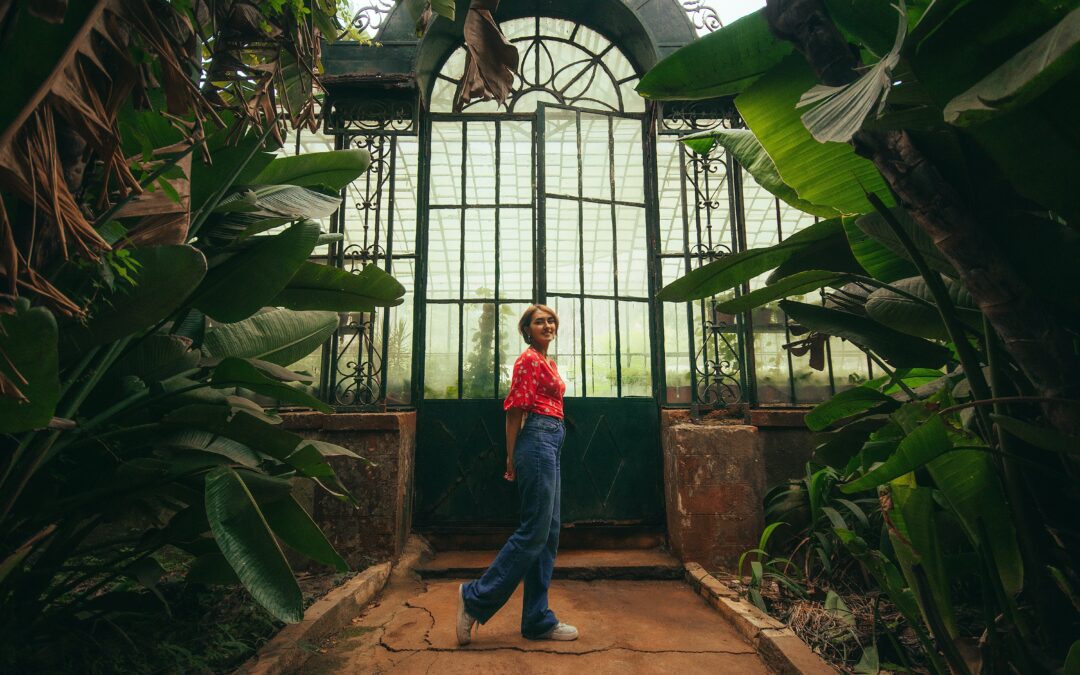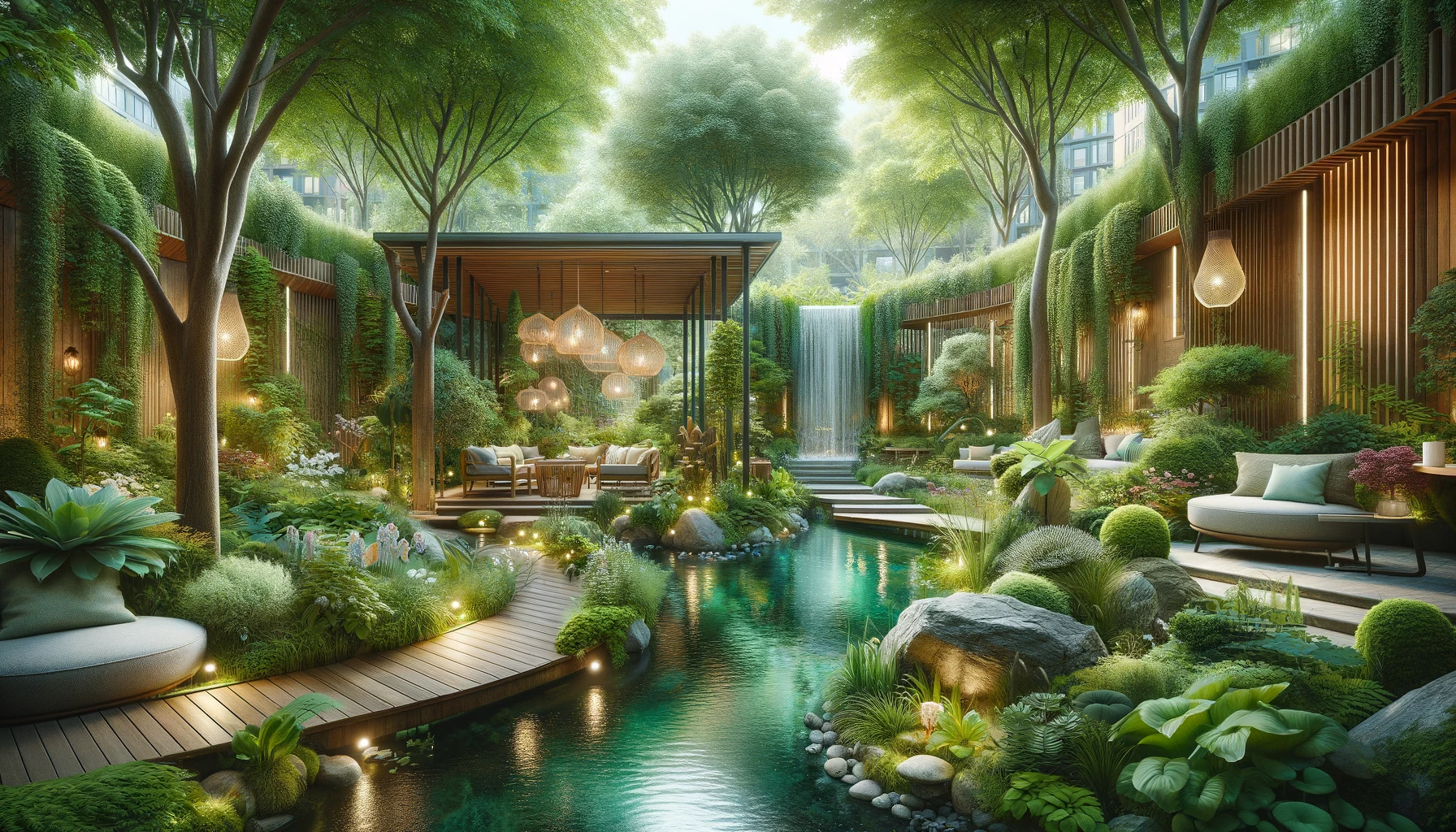In the hustle and bustle of our modern lives, snatching moments of tranquility can feel out of reach. We’re constantly bombarded by the demands of work, the buzz of technology, and the never-ending to-do lists that seem to grow longer with each passing day. Amidst this chaos, our minds become cluttered, our bodies tense, and our spirits weary.
Yet, amidst the chaos, there lies a simple truth: we are beings deeply connected to the natural world. In the midst of concrete jungles and towering skyscrapers, there exists a primal longing for the touch of grass beneath our feet, the scent of flowers in the air, and the soothing embrace of sunlight on our skin. It’s a longing that speaks to something fundamental within us – a yearning for connection, for grounding, for peace.
In these moments of quiet reflection, we begin to understand the power of nature to heal, to restore, and to nourish our weary souls. And nowhere is this power more evident than in the sanctuary of the therapeutic garden.
Contents
What is Therapeutic Garden Design?
A therapeutic garden isn’t just a patch of greenery; it’s a carefully crafted sanctuary designed to promote healing and well-being. But what exactly constitutes a therapeutic garden, and how does it differ from a traditional garden space?
At its core, a therapeutic garden is a purposeful integration of nature and design, meticulously planned to engage the senses and evoke a sense of tranquility. Unlike conventional gardens, which may prioritize aesthetics or practicality, therapeutic gardens are created with the sole intention of nurturing the mind, body, and spirit.
Principles of Biophilic Design
One key principle that underpins the design of therapeutic gardens is biophilic design – the idea that humans possess an innate affinity for nature and that incorporating natural elements into our built environment can enhance our health and happiness. From the graceful curve of a winding pathway to the gentle rustle of leaves in the breeze, every aspect of a therapeutic garden is thoughtfully curated to reconnect us with the natural world.
“In every walk with nature, one receives far more than one seeks.”
– John Muir
The Role of Natural Elements in Healing
From the delicate petals of a flower to the soothing sound of trickling water, each component of a therapeutic garden is carefully selected to contribute to the overall sense of well-being.
Plants
At the heart of any therapeutic garden lies its botanical residents. Plants, with their diverse colors, textures, and fragrances, engage our senses in a symphony of natural beauty.
Whether it’s the vibrant hues of blooming flowers, the velvety touch of a leaf, or the intoxicating scent of lavender on the breeze, plants have a remarkable ability to uplift our spirits and soothe our souls. Moreover, many plants possess therapeutic properties, from calming chamomile to mood-boosting rosemary, adding an extra layer of healing to the garden’s tapestry.
Water Features
Water holds a special allure in the therapeutic garden, its presence evoking a sense of serenity and tranquility.
Whether it’s a pond shimmering with reflected light or a babbling brook meandering through the landscape, water features bring a dynamic element to the garden, captivating the eye and calming the mind. The gentle sound of flowing water acts as a natural soundtrack, drowning out the noise of the outside world and inviting us to enter a state of deep relaxation.
Natural Materials
Incorporating natural materials such as wood, stone, and earth into the design of a therapeutic garden adds a sense of grounding and authenticity. These elements connect us to the earth beneath our feet, reminding us of our place in the natural world and the enduring cycles of life.
Whether it’s the warmth of sun-warmed stone beneath our palms or the rough texture of weathered wood against our fingertips, natural materials awaken our senses and deepen our connection to the garden environment.
Together, these natural elements work in harmony to create a multisensory experience that nurtures both body and soul. In the therapeutic garden, the healing power of nature is palpable, offering respite from the chaos of modern life and inviting us to reconnect with ourselves and the world around us.
The Real Healing Benefits of a Therapeutic Garden
It’s not just anecdotal – the benefits of nature are real and documented:
- Stress Reduction: Natural settings lower cortisol levels, reducing stress.
- Improved Mood: Exposure to green spaces can decrease symptoms of depression and anxiety, enhancing overall mood.
- Increased Relaxation: The calming environment of gardens promotes relaxation through sensory experiences of nature’s beauty and sounds.
- Physical Health Benefits: Gardening activities encourage physical exercise, aiding in cardiovascular health and physical rehabilitation.
- Social Interaction: These gardens serve as communal spaces that enhance social connections and community engagement.
Key Elements to Include in Your Garden
Whether you’re designing a garden for yourself, a loved one, or a facility, putting it together with specific sensory elements can maximize its therapeutic potential.
Incorporating Sensory Stimulation
Sensory stimulation plays a vital role in the therapeutic quality of a garden. Consider these aspects:
- Fragrance: Include calming, aromatic plants such as lavender, jasmine, or mint to engage the sense of smell.
- Texture: Plant variety with different textures—smooth, furry, prickly—to provide tactile experiences. Lamb’s ear and ferns are great for touch.
- Color: Use a palette of colors to stimulate the mind and improve mood. Bright colors can energize, while cool tones like blues and greens can soothe.
Creating Spaces for Solitude and Reflection
- Secluded Areas: Design quiet, secluded nooks using natural barriers like shrubs or bamboo. These spaces are perfect for meditation, reading, or simply enjoying a moment of solitude.
- Water Features: Incorporate elements such as a small fountain or a bird bath to add a calming auditory experience and attract wildlife.
Ensuring Accessibility
- Wide Pathways: Ensure paths are wide and flat to accommodate everyone, including those with mobility challenges. Materials like smooth paving or compacted gravel are both wheelchair-friendly.
- Raised Beds and Seating: Include raised planting beds and plenty of seating areas to make gardening and relaxation accessible for people of all ages and abilities.
- Walking Paths: Design paths that encourage gentle walks, made interesting with curves and varied views. This encourages regular physical activity and exploration.
By thoughtfully incorporating these elements, homeowners can create a therapeutic garden that serves as a personal retreat, offering a myriad of health benefits and enhancing the overall quality of life.
Design Elements and Ideas
1. Calming Scents and Soothing Plants
- Lavender: Renowned for its calming properties, lavender’s fragrance aids relaxation and reduces stress. Plant it in borders, containers, or even fragrant sachets near seating areas.
- Chamomile: Known to promote sleep and soothe anxiety, chamomile’s apple-like scent can be enjoyed through flowers or ground covers.
- Rosemary: Sharpening focus and memory, rosemary’s invigorating aroma is perfect for stimulating areas. Incorporate it in hedges, low borders, or companion plantings with vegetables.
- Catmint: Repelling mosquitoes while attracting beneficial insects, catmint’s soft purple flowers emit a calming scent. Use it as edging, groundcovers, or in containers near seating.
- Passionflower: This vibrant climber boasts calming properties and unique, mesmerizing blooms. Train it on trellises or walls near seating areas for visual and aromatic enjoyment.
2. Seating for Relaxation and Contemplation:
- Hammocks: Suspended between trees or under covered patios, hammocks offer a gentle swaying motion perfect for deep relaxation.
- Swinging benches: Similar to hammocks, swinging benches add a playful element while providing gentle movement for contemplation.
- Meditation benches: Simple, backless benches encourage mindful sitting and promote posture. Place them in quiet areas with calming views.
- Cozy nooks: Create intimate seating areas with comfortable chairs, chaise lounges, or cushions nestled amongst greenery.
- Fire pits: The warmth and flickering flames of a fire pit create a mesmerizing focal point and promote social gatherings or quiet reflection.
3. Soothing Sounds of Water:
- Fountains: Cascading or bubbling water features add a tranquil sound and visual element. Choose tabletop fountains for patios or larger designs for ponds.
- Waterfalls: The sound of trickling water is incredibly calming. Incorporate small waterfalls into ponds or create rock gardens with miniature cascades.
- Bamboo water chimes: Wind chimes create gentle, melodic sounds that add a serene touch. Select calming tones and hang them in sheltered areas.
- Ponds: The gentle lapping of water and the presence of aquatic life create a peaceful ambiance. Consider incorporating a small koi pond or water feature with aquatic plants.
4. Natural Materials and Textures:
- Wood: Use untreated wood for benches, trellises, and pathways, bringing warmth and a natural feel to the space.
- Stone: Integrate natural stones into pathways, seating areas, or water features, adding texture and a sense of groundedness.
- Bamboo: This fast-growing, sustainable material can be used for fencing, screens, or trellises, providing a natural and calming aesthetic.
- Moss gardens: Create miniature landscapes with soft, green moss, offering a tactile and visual connection to nature in shaded areas.
- Water-smoothed pebbles: Incorporate them into pathways or dry creek beds for a calming texture underfoot and soothing sound during rainfall.
Personalization is key – choose plants, scents, and features that resonate with you and create a space that truly reflects your personal sanctuary.
Bonus Tip: Incorporate elements that encourage mindfulness practices, such as designated meditation areas, labyrinth paths, or small Zen gardens.
Even a tiny corner dedicated to mindful connection can blossom into a haven of peace and rejuvenation. Let your garden be your personal sanctuary, a reminder that true well-being thrives when we reconnect with the natural world.
Contact Meadowbrook Design today and take the first step towards your own peaceful oasis.


